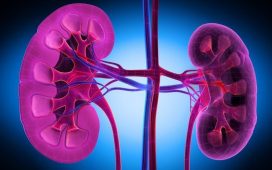Patients with long versus short SBT exhibit greater microvascular obstruction; no association seen by door-to-balloon time
THURSDAY, Jan. 14, 2021 (HealthDay News) — For patients with ST-segment elevation myocardial infarction (STEMI) undergoing primary percutaneous coronary intervention (pPCI), symptom-to-balloon time (SBT), but not door-to-balloon time (DBT), is associated with infarct size and microvascular obstruction (MVO), according to a study published online Jan. 14 in Circulation: Cardiovascular Interventions.
Björn Redfors, M.D., Ph.D., from the Clinical Trials Center at the Cardiovascular Research Foundation in New York City, and colleagues examined the association for SBT and DBT with infarct size and MVO after pPCI using pooled data for 3,115 STEMI patients in 10 randomized trials. Within one month after random assignment, infarct size was assessed; MVO was assessed by cardiac magnetic resonance imaging.
The median SBT was 185 minutes and median DBT was 46 minutes. The median time to infarct size assessment was five days after pPCI. The researchers identified a stepwise increase in infarct size according to SBT category (adjusted difference [95 percent confidence interval], 2.0 [0.4 to 3.5] and 4.4 [2.7 to 6.1] percent for intermediate and long SBT, respectively, versus short SBT), but not according to DBT category (adjusted difference [95 percent confidence interval], 0.4 [â1.2 to 1.9] and â0.1 [â1.0 to 3.0] percent for intermediate and long SBT, respectively, versus short SBT). Patients with long versus short SBT had greater MVO (adjusted difference, 0.9 percent; 95 percent confidence interval, 0.3 to 1.4); no difference was seen for patients with intermediate versus short SBT (adjusted difference, 0.1 percent; 95 percent confidence interval, â0.4 to 0.6). The investigators observed no difference in MVO by DBT category. In a multivariable analysis with SBT and DBT included as continuous variables, the results were similar.
“We must emphasize efforts to increase public awareness of heart attack symptoms and shorten the time it takes for patients to access emergency care,” a coauthor said in a statement.
Several authors disclosed financial ties to the biopharmaceutical industry.
Abstract/Full Text (subscription or payment may be required)
Copyright © 2020 HealthDay. All rights reserved.








